IMPACT
As the the weeks progressed, so did our process. The theatre company Frantic Assembly inspired us as a theatre company for our rehearsals and developing our work. Frantic Assembly’s Scott Graham and Steven Hoggett use many rehearsal techniques when creating a performance. As a Theatre Company Rubbish Theatre have been inspired by some of these when creating our performance If An Orchid Was All You Had (2017). The use of video camera in rehearsal was one of the techniques that inspired us. This allowed us to record all the material we were making, and enabled us to see what worked, and what didn’t. Graham and Hoggett state: “by filming […] sessions on the video camera we provided ourselves with a wealth of information that used constantly throughout the entire rehearsal period” (Graham and Hoggett, 2009, 39). Our process is documented through the use of video camera, while enlightening us to the areas that need working on.
In the early stages of rehearsals we used another of Frantic Assembly’s rehearsal techniques by using music. Music enabled us to build a bond as a theatre company, which was paramount as we work very closely as an ensemble throughout the performance. The use of music also allowed us to merge our ideas together, as the music would make each of us have a different feeling, in which we could carry into our performance and into our characterisation of The Creatures. For me as a performer this was very helpful in developing my movement as a Creature, and being able to use this to get into character.
DEVELOPMENT
A group coming together for the first may find introductory practical work an instrumental way of getting to know each other, using games, concentration, and trust exercises to develop a sense of discipline, fun, and spontaneity at the same time
(Oddey, 1996, 171).
As our performance is really starting to take shape, we are learning about each other as performers. As earlier on in the process we were interested in the idea of circuses, we have tried many exercises to start to develop our characters. One of the techniques we tried was embodying an animal, and moving around the room like this. We then further developed this idea by all of us becoming circus monkeys, and passing the video camera around between us. “The process of setting up improvisations in the creative development does not draw on Stanislavskian ideas of character and motivation, but centres on formal tasks and interactions between performers” (Heddon and Milling, 2006, 168).
In a previous blog post you can see my make-up ideas, which involve a handprint on the face. We have now developed this, and have chosen to integrate this within the piece and use this as a ritual at the beginning of the performance. The Woman places a single handprint on our faces to symbolise us committing to the madness of The Man’s inner psyche.
CHARACTERISATION
SCENE BY SCENE
AWAKENING PART ONE
- Regimented
- Creepy
This scene was choreographed by Kerrie, and as The Creatures in this scene we are regimented in the beginning, this is an indicator into The Man’s life, as we had decided as an ensemble that he may have previously been in the Army.
AWAKENING PART TWO
- Happy
- Over dramatic
- Big smiles
My characterisation for this scene was influenced by Forced Entertainments First Night (2001), as in their performance they use creepy smiling faces throughout, even when talking about issues that are not happy subjects.
Devised performance [is] an opportunity for the actors to create new rituals
(Heddon and Milling, 2006, 48).
In our performance we have many motifs/rituals, which follow through to different scenes. One of these being our smiling faces, in which we use throughout the performance. This scene was also influenced by a Saturday Night Live Sketch called Great Day.
Attached is the video of the sketch, in which you can see that everything is going wrong for the man, yet he still has a massive smile on his face and ignores the problems that arise, which is what we do within this scene.
MEMORY
- Sneaky
- Eclectic
For some of this scene I take on the role of The Man, yet still as a Creature. For this scene I was able to reflect on my own experience of speaking to a councillor to portray speaking to a therapist. This scene is rather difficult as a performer, as I was playing The Man but I was a Creature, messing with The Man’s memory.
SADISM
- Cheesy
- Crazy
For this scene I have taken inspiration from watching videos of ring girls at boxing matches. I am someone who is trying to boost the audience, while holding up signs saying: LAUGH NOW, APPLAUSE and AWW. With this I still play with dark comedy throughout the scene.
Works Cited:
Graham, S., and Hoggett, S. (2009) The Frantic Assembly Book of Devising Theatre. Abington, Oxon: Routledge.
Heddon, D., and Milling, J. (2006) Devising Performance a critical history. Basingstoke: Palgrave Macmillan.
Oddey, A. (1996) Devising Theatre a Practical and Theoretical Handbook. London: Routledge.
Real Time (2004) First Night [image]. Available from http://www.realtimearts.net/article/issue59/7335 [accessed 27 April 2017].
Saturday Night Live (2013) SNL Digital Short: Great Day – Saturday Night Live. Available from https://www.youtube.com/watch?v=vNgZJrdTCug [accessed 12 May 2017].

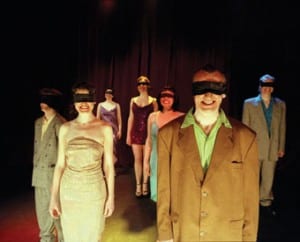
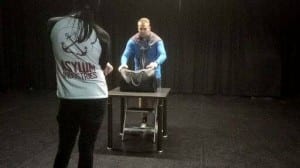
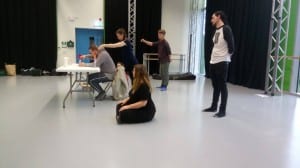
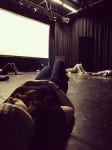
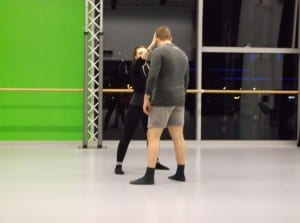
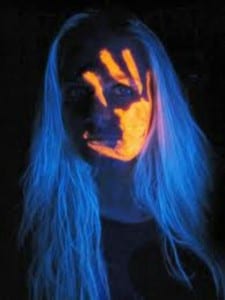
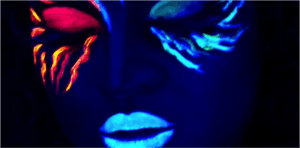
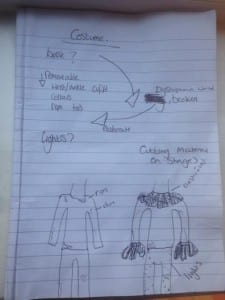
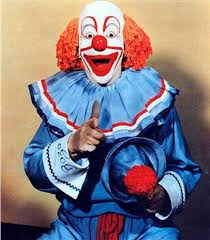
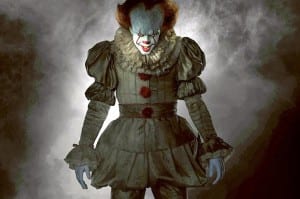 (New Line Cinema, 2017)
(New Line Cinema, 2017)